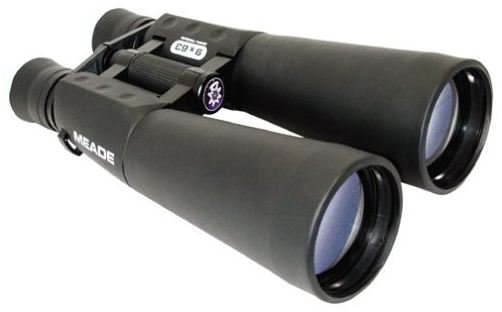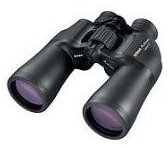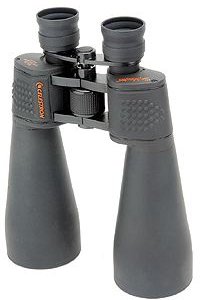Tips for Buying the Best Binoculars for Astronomy
Binoculars: Not Just for Bird-Watching Anymore!
Backyard astronomers often get confused over choosing the right equipment to view the night sky. While a sturdy beginner’s telescope is a good choice to look into the sky, most amateur astronomers don’t know that there are some of the finest astronomy binoculars specifically made for that casual cosmic view. These “twin telescopes” are the most versatile astronomical tools, which a beginner astronomer can use to see the moon, planets, nebula, and even comets.
There are various factors that determine the best binoculars for astronomy, including the aperture range, magnification, field of view and the prism quality. To learn more about astronomy binoculars, their important characteristics and a simulation of how celestial objects might appear using a pair of astronomy binoculars, you can read the “Backyard Astronomy with Binoculars” article.
Thing to Look for Before Buying a Pair of Best Binoculars for Astronomy
For those starting out in astronomy, a pair of binoculars may be a very good choice over a small telescope. Binoculars for astronomy have a very wide field of view and possess a large diameter of the front lenses, which gives a good view of the night sky. However, buying a pair of binoculars can be a difficult task if you don’t have a checklist ready with you.
A checklist mentioning several important characteristics will help you buy the most accurate binoculars for astronomy. Here are some important points that should be noted before purchasing the best binoculars for astronomy:
Aperture
One of the most significant specifications of astronomy binoculars is the aperture. The front lenses are the aperture of a pair of binoculars. The larger the diameter of the front lenses, the more light they gather, giving a clearer and brighter view of the night sky. Binoculars with a 50mm-80mm diameter range can be used for astronomy purposes.
Magnification
When buying a good pair of binoculars for astronomy, you will come across two numbers in the specifications list: 10x50 or 15x70, where the first of those numbers refers to the magnification and the second refers to the diameter of the front lenses, which was explained in the Aperture section.
If you are looking for a pair of binoculars for astronomy, go for those which magnify at least 10 times to get excellent views of celestial objects in the night sky. However, there are binoculars with magnifications more than 10x and diameters larger than 50mm. They usually require a tripod to give superb views of planets and nebula.
Field of View
A wider field of view in a pair of binoculars will give a wide visual angle to view comets or other moving objects in the night sky. When you buy a pair of binoculars purely for astronomy purposes, look out for wide angle models in between 8 and 10 degrees.
The Prisms Inside a Pair of Binoculars
The prism also determines how good the binoculars are for serious astronomy purposes. The prism is used to reflect the path of the light, create sharper image viewing and also to ensure the image appears right-side up. When choosing a pair of binoculars, always purchase models that contain Z-shaped porro-prisms.
The porro prisms reflect the path of light 3 times. If you want higher-quality binoculars, then go for Porro Bak-4 prisms (barium crown glass prisms). Also, make sure to check whether the binoculars have coated optics, both for the prisms and the lens. This will make the images brighter and the objects viewed will have a higher contrast. Models containing roof prisms tend to be more expensive than porro prism models and the celestial objects viewed are slightly dimmer, though it can be rectified through proper adjustments made by the viewer in the binoculars itself.
Price
Well, we have learned the basic characteristics that are to be mentioned in your checklist before buying a pair of binoculars for pure astronomy. But, how much do these binoculars cost? Are they more expensive than a small telescope? Well, there are certain aspects which need to be ascertained before purchasing one; these include:
-
The quality of the model and its manufacturer
-
Whether you want a mid-sized or high-end pair of binoculars for astronomy
Large binoculars cost around $100-$800. However, a pair of astronomy binoculars available from popular companies such as Celestron, Meade and Nikon is priced well below $100. They provide excellent views of the night sky and are at par with high-end models costing above $100 when it comes to clarity sharpness and effectiveness in viewing planets, comets and nebula. For amateur, backyard astronomers, these models work like a charm. They can be used to view the moons of Jupiter, nebula, planets and Earth’s Moon. In the next page, we will find out which are the best binoculars for astronomy priced under $100.
Celestron SkyMaster Giant 15x70 Binoculars (5 out of 5)
Celestron is a renowned name in high quality telescopes and binoculars. Its SkyMaster range of binoculars is one of the major players in the low-priced high-aperture giant binocular arena. On paper, they sound very good and are one of the top contenders among the best binoculars for astronomy. The most impressive features of the SkyMaster Giant 15x70 are: the aperture, Bak-4 prisms and multicoated optics – three most important characteristics a good pair of astronomy binoculars must possess.
The multicoated optics ensures sharper image and high contrast, which will allow you to view celestial objects with much ease at night. Another important aspect is the prism quality. In the previous page, I mentioned that Bak-4 prisms are used by high-end models, but Celestron proved it wrong – even a low-priced model can contain the best set of prisms.
Another impressive feature is the aperture. Most binoculars used for serious star-gazing have the 70mm to 80 mm aperture range, and so the Celestron SkyMaster Giant 15x70 fits the bill. Moreover, the included Tripod adapter ensures the binoculars can be easily mounted on a tripod. If you want a pair of binoculars to view the night sky, the SkyMaster Giant can be the most excellent choice for your celestial viewing pleasures. The Celestron SkyMaster Giant 15x70 Binoculars cost just under $100 at Amazon and offer great value for money.
Meade Travel View 9X63 Binoculars (4 out of 5)

Another great Binocular for astronomy with Bak-4 prisms and fully coated optics is the Meade Travel View. It is ideal for viewing comets and star clusters. Meade is one of the world’s most famous companies manufacturing telescopes, microscopes and the best binoculars for astronomy. Its “Travel View” range of telescopes is known for their sturdiness, comfortable viewing and large front lens diameter (63mm). The Travel View binoculars with 9x magnification are priced at a discount (between $80 and $100) at major online stores like Amazon.
The Travel View 9X63 Binoculars’ durable rubber coated body ensures that the pair of binoculars does not slip out of your hands. Compared to average astronomy binoculars, the eye relief is much longer (almost 21 millimeters), which ensures hours of relief and comfort to those who wear eyeglasses for nearsightedness or farsightedness. To learn more about eye relief, you can read “Selecting Binoculars to View the Night Sky” article.
Nikon 7218 Action 10 X 50mm Binoculars (4 out of 5)

The binocular choices a person makes are sometimes associated with renowned brand names. Nikon is one of the main companies that manufacture good mid-sized binoculars for astronomy. The company is known more for its high-quality compact digital SLR cameras than instruments for viewing planets and moons, but the Action series of binoculars is something every amateur astronomer would like to posses. The USP of the Nikon 7218 Action 10 x 50mm Binoculars is its multicoated aspherical lenses that will help to view celestial objects clearer. This pair of binoculars also uses high-index Bak-4 prisms for impressive resolution and brightness.
The 10x magnification combined with 50mm objective lenses (front end lenses with diameter of 50mm) offers nice night-time celestial views without the need of a tripod. The objects in the night sky can be very sharp and detailed. Of course, you cannot compare this pair of binoculars with the Celestron Giant 15 x 70 binoculars’ sharpness, contrast and brightness, given that that the aperture is only 50mm and 10x magnification, but you can surely have a satisfying view of the night sky and can easily carry anywhere you like. The Nikon 7218 Action 10 X 50mm pair of binoculars is priced modestly around $80.74 at Amazon.
